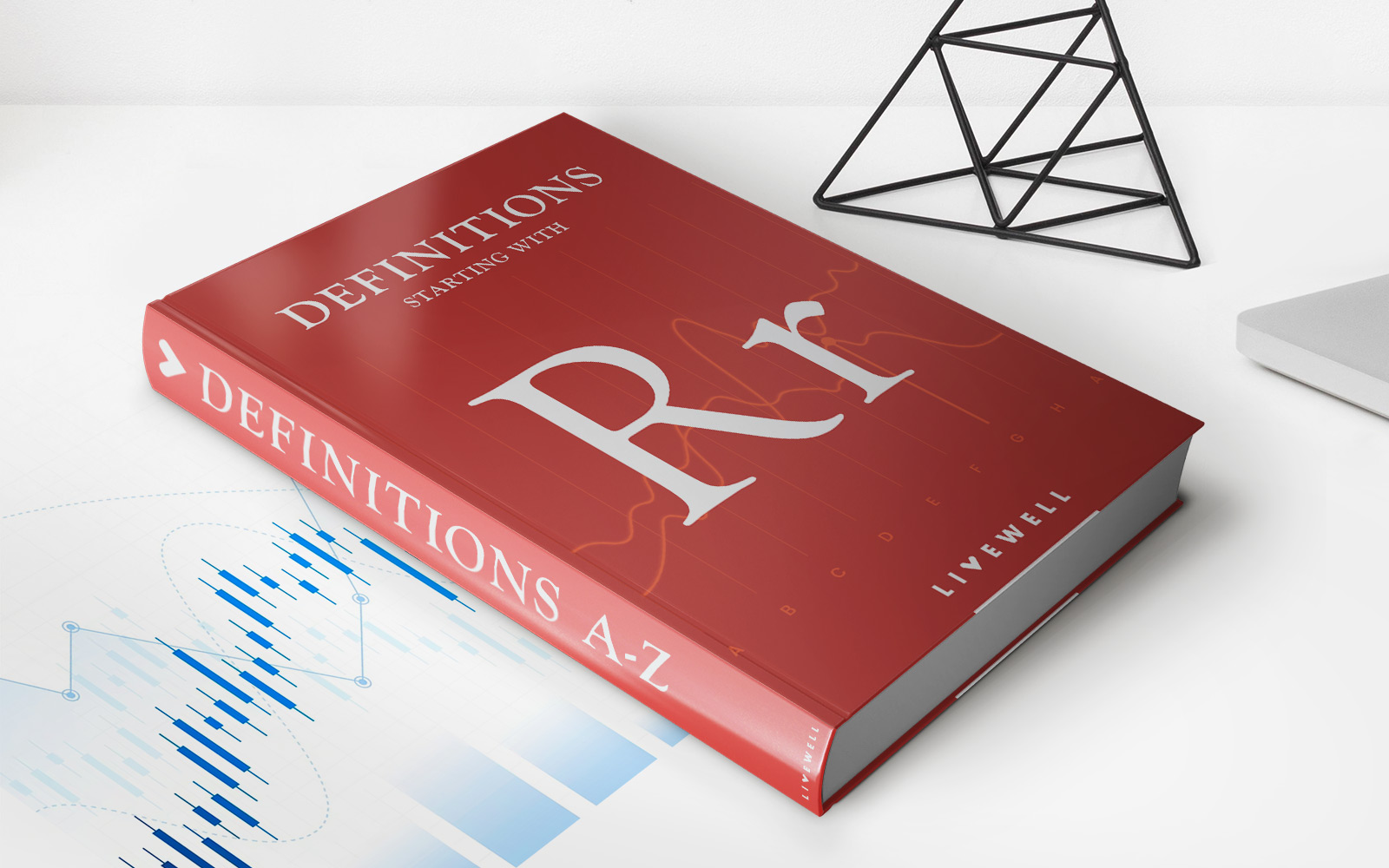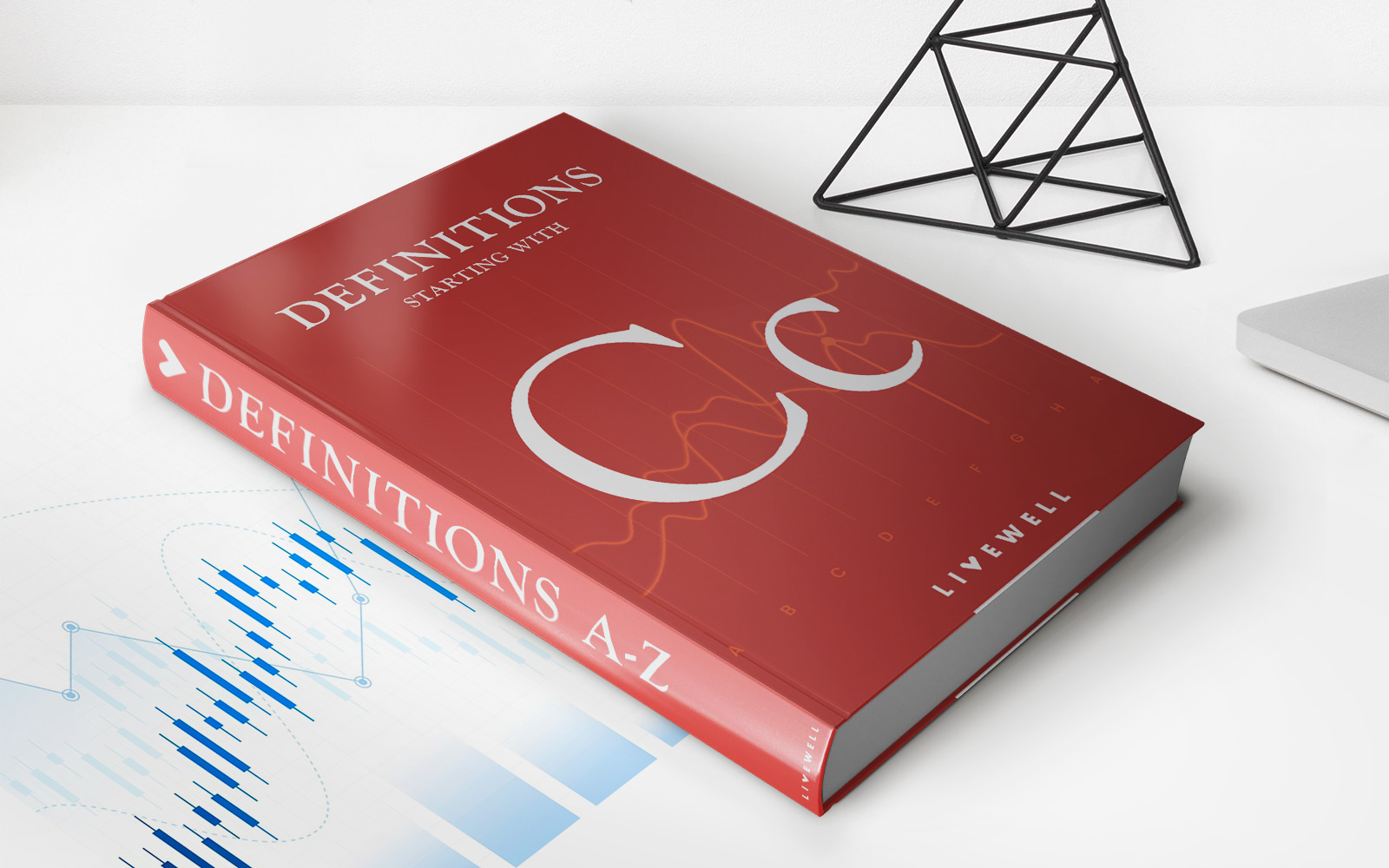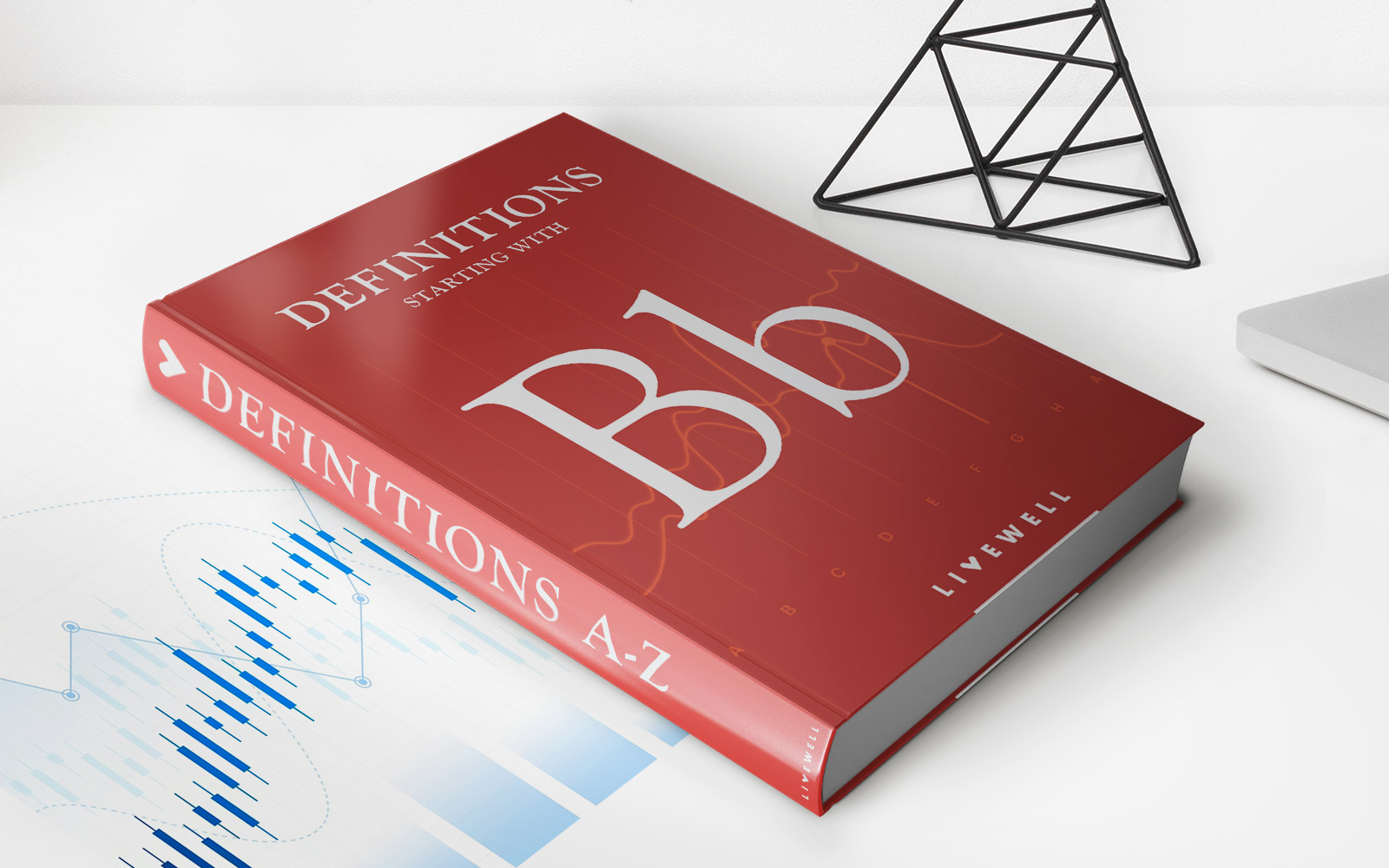Home>Finance>What Does A Demand Feature Mean In A Mortgage Loan


Finance
What Does A Demand Feature Mean In A Mortgage Loan
Modified: February 21, 2024
Learn about the meaning of a demand feature in a mortgage loan, including its important role in finance. Discover how this feature can impact your loan terms and repayment options.
(Many of the links in this article redirect to a specific reviewed product. Your purchase of these products through affiliate links helps to generate commission for LiveWell, at no extra cost. Learn more)
Table of Contents
Introduction
Welcome to the world of mortgage loans, where borrowers can choose from a wide array of features and options to meet their specific needs. One such feature that you may come across is the demand feature. This article will provide you with a comprehensive understanding of what a demand feature means in the context of a mortgage loan.
When you apply for a mortgage loan to purchase a home or refinance your existing one, you are essentially borrowing a large sum of money from a lender. This loan comes with specific terms, including an interest rate, monthly payments, and a repayment period. However, some mortgages include a demand feature, which adds an extra level of flexibility for both the borrower and the lender.
A demand feature, also known as a call provision or an acceleration clause, allows the lender to demand the full repayment of the loan balance at any time, even before the agreed-upon maturity date. In simpler terms, it gives the lender the right to call in the loan and request the borrower to repay the outstanding amount on short notice.
This demand feature is typically included in mortgage loans as a safeguard for the lender. It provides them with an additional risk management tool if the borrower fails to meet their loan obligations or if there is a significant change in the borrower’s financial circumstances.
For borrowers, the demand feature may seem daunting at first, but it also offers certain advantages. It can provide them with an opportunity to negotiate better loan terms, lower interest rates, or even access to additional funds when needed. Additionally, it allows borrowers to have more control over their mortgage loan and the freedom to refinance or sell their property without any prepayment penalties.
However, it’s crucial to understand that the demand feature comes with certain risks and considerations. Borrowers need to carefully assess their financial situation and evaluate their ability to repay the loan if the lender exercises the demand feature. It is essential to have a solid financial plan in place to ensure that you can meet the unexpected demand for full repayment.
Now that we have a basic understanding of what a demand feature means in the context of a mortgage loan, let’s delve deeper into how it works and explore the potential benefits and risks associated with this feature.
Definition of a Demand Feature
A demand feature in a mortgage loan refers to a provision that grants the lender the right to request immediate repayment of the outstanding loan balance. This feature allows the lender to “call” or “accelerate” the loan, meaning that they can demand full repayment before the agreed-upon maturity date.
When a mortgage loan includes a demand feature, it gives the lender an added level of control and protection. In the event of a borrower’s default or unforeseen changes in financial circumstances, the lender can exercise the demand feature to recover their funds without delay.
The demand feature is typically included in mortgage loan agreements as a safeguard for the lender and a potential source of negotiation for the borrower. It helps mitigate the lender’s risk by providing them with a means to protect their investment, especially in situations where the borrower exhibits a high risk of default or where there is a substantial change in the borrower’s ability to repay the loan.
From the borrower’s perspective, the demand feature can create a sense of urgency and potential financial instability. However, it also offers certain benefits and opportunities. For borrowers who can meet the lender’s demand for repayment, it can allow them to negotiate better loan terms, such as reduced interest rates or more favorable repayment schedules.
It’s important to note that the demand feature is not a standard component of all mortgage loans. The inclusion of this feature is typically dependent on factors such as the borrower’s creditworthiness, the lender’s risk assessment, and the overall terms of the loan agreement.
Having a demand feature in a mortgage loan can provide an added layer of flexibility for both the lender and the borrower. However, it’s essential to thoroughly understand the implications and potential risks associated with this feature before entering into a mortgage agreement.
Now that we have a clear understanding of what a demand feature entails, let’s explore how it works in the context of a mortgage loan.
How a Demand Feature Works in a Mortgage Loan
Understanding how a demand feature works in a mortgage loan is crucial for both borrowers and lenders. This provision allows the lender to call in the loan and request immediate repayment of the outstanding balance. Let’s explore the mechanics of how a demand feature operates.
When a borrower signs a mortgage loan agreement that includes a demand feature, they are essentially giving the lender the right to demand full repayment of the loan at any time. This means that if the lender chooses to exercise the demand feature, the borrower will have to repay the remaining balance, including principal and interest, immediately.
The lender typically exercises the demand feature under specific circumstances, such as the borrower’s default on payment obligations or a significant change in the borrower’s financial situation. It acts as a protective measure for the lender, ensuring they can recover their funds promptly in case of potential losses.
Upon receiving a demand for repayment, borrowers have a limited period of time to comply with the lender’s request. The specific timeframe may vary depending on the terms outlined in the loan agreement. It is vital for borrowers to assess their financial capabilities to ensure they can fulfill the demand for immediate repayment should the lender exercise this provision.
In some cases, borrowers may negotiate with the lender to extend the repayment period or explore alternative options to satisfy the demand. However, the lender has the ultimate authority to either accept or reject the borrower’s proposal.
It’s important to note that the demand feature can also have implications for borrowers who are looking to refinance or sell their property. Before entering into any transactions, it is crucial for borrowers to inform potential lenders or buyers about the existence of the demand feature to avoid any complications or surprises in the future.
Furthermore, borrowers should be aware that the demand feature may also incur costs, such as additional fees or penalties, upon exercise. These costs can vary depending on the terms specified in the loan agreement and the specific circumstances surrounding the demand for repayment.
Overall, the demand feature in a mortgage loan gives the lender the power to demand immediate repayment of the outstanding balance. Borrowers must carefully consider the potential risks and implications of such a provision before entering into a mortgage agreement.
Next, let’s explore the benefits of having a demand feature in a mortgage loan.
Benefits of Having a Demand Feature
While the demand feature in a mortgage loan may initially seem like a cause for concern, it can actually offer several benefits for both borrowers and lenders. Let’s take a closer look at some of the advantages of having a demand feature in a mortgage loan:
- Negotiating Better Loan Terms: The presence of a demand feature can provide borrowers with an opportunity to negotiate more favorable loan terms. Lenders may be willing to offer lower interest rates or more flexible repayment options if they have the assurance that they can exercise the demand feature under certain circumstances.
- Flexibility and Freedom: For borrowers who have the financial means to repay the loan on short notice, the demand feature can provide them with increased flexibility and freedom. They can refinance or sell their property without worrying about prepayment penalties or extended loan terms. This can be particularly beneficial for borrowers who anticipate changes in their financial situation or plan to move or upgrade their homes in the near future.
- Risk Mitigation for Lenders: The demand feature acts as a risk management tool for lenders. It provides them with an added layer of protection in case the borrower defaults on their loan or experiences a significant deterioration in their financial circumstances. By having the ability to demand immediate repayment, lenders can reduce their exposure to potential losses and ensure a quicker recovery of their funds.
- Access to Additional Funds: In some cases, borrowers may find themselves in need of additional funds for personal or investment purposes. With a demand feature in place, borrowers who have built equity in their property may be able to negotiate a new loan or line of credit based on the existing mortgage. This can provide them with a convenient and cost-effective way to access the funds they require.
- Improved Loan Approval Chances: Including a demand feature in a mortgage loan can increase the likelihood of loan approval for borrowers who may be considered higher risk due to factors such as credit history, income fluctuations, or self-employment. Lenders may be more willing to extend financing if they have the added protection of being able to call in the loan if the borrower defaults.
It’s important to note that the benefits of a demand feature can vary depending on the individual circumstances and the specific terms negotiated between the borrower and the lender. It is advisable for borrowers to carefully assess their financial situation and evaluate whether the benefits outweigh the potential risks before agreeing to a mortgage loan with a demand feature.
Now that we have explored the benefits of having a demand feature, let’s discuss the risks and considerations associated with this provision in a mortgage loan.
Risks and Considerations of a Demand Feature
While a demand feature in a mortgage loan can offer certain advantages, it is crucial for borrowers to be aware of the associated risks and considerations. Understanding these potential drawbacks will help borrowers make informed decisions and mitigate any potential challenges that may arise. Here are some key risks and considerations to keep in mind:
- Potential Financial Instability: The demand feature introduces an element of uncertainty and potential financial instability for borrowers. If the lender decides to exercise the demand feature, borrowers must be prepared to repay the outstanding loan balance in full, which can be a significant financial burden.
- Sudden Repayment Requirements: If the demand feature is triggered, borrowers will have a limited time frame to repay the loan. This can be particularly challenging for borrowers who do not have readily available funds or who may need to scramble to secure alternative financing options within a short period.
- Impact on Refinancing or Property Sale: The existence of the demand feature can complicate the process of refinancing or selling the property. Potential lenders or buyers may be hesitant to proceed if they are aware of the demand feature since it introduces an element of risk and uncertainty.
- Potential Penalties and Costs: The exercise of the demand feature may come with additional fees, penalties, or costs that borrowers need to consider. These costs can vary depending on the terms outlined in the loan agreement, and they can add to the overall financial burden of repaying the loan.
- Requirement for Solid Financial Planning: Having a demand feature in a mortgage loan requires borrowers to have a well-established financial plan in place. They must be prepared for potential unforeseen circumstances and ensure that they have the means to repay the outstanding balance if the lender exercises the demand feature.
- Potential Difficulty in Loan Approval: While a demand feature may provide certain benefits, it can also make it more challenging for borrowers to secure loan approval in the first place. Lenders may view the demand feature as an additional risk factor and may require borrowers to meet stricter eligibility criteria or provide more substantial down payments.
It is essential for borrowers to carefully evaluate their financial situation and consider the potential risks and implications of a demand feature before agreeing to a mortgage loan. Taking these considerations into account will help borrowers make informed decisions and ensure they are prepared to handle any potential challenges that may arise.
Now, let’s explore some examples of how demand features are implemented in mortgage loans.
Examples of Demand Features in Mortgage Loans
Demand features can be implemented in different ways, depending on the specific terms and conditions of the mortgage loan. Here are a few examples of how demand features may be incorporated:
- Full Repayment Demand: In this type of demand feature, the lender has the right to demand the immediate full repayment of the outstanding loan balance, including principal and interest. If the borrower fails to comply, the lender can take legal action to enforce the repayment or initiate foreclosure proceedings.
- Partial Repayment Demand: Some demand features allow the lender to request a partial repayment of the outstanding balance. This can occur when the borrower has defaulted on specific payments or when there is a change in the borrower’s financial circumstances. The borrower must then repay the specified amount within a designated time frame.
- Interest Only Demand: In certain demand features, the lender may restrict the demand for repayment to only the accrued interest on the loan. This means that borrowers would be required to repay the accumulated interest without affecting the principal balance of the loan. This type of demand can provide borrowers with temporary relief while still addressing any financial concerns raised by the lender.
- Contingent Demand: A contingent demand feature is triggered by specific events or conditions defined in the loan agreement. For example, if the borrower fails to maintain adequate insurance coverage on the property or breaches any other terms outlined in the agreement, the lender can demand immediate repayment.
- Flexible Repayment Options: Some mortgage loans with demand features may offer flexible repayment options to borrowers. For instance, the lender may provide a grace period before the demand for repayment is enforced, giving borrowers additional time to secure alternative financing or arrange for the repayment of the loan.
It’s important to note that the specific terms and implementation of demand features can vary greatly between mortgage loan agreements. Borrowers should carefully review the loan agreement, seek legal advice if necessary, and fully understand how the demand feature operates in their specific loan arrangement.
By understanding these different examples of demand features, borrowers can better assess the potential impact and implications of such provisions in their mortgage loans.
Finally, let’s wrap up our discussion on demand features in mortgage loans.
Conclusion
A demand feature in a mortgage loan can offer both benefits and risks for borrowers and lenders. It grants the lender the right to demand immediate repayment of the outstanding balance, providing them with an added layer of protection and risk mitigation. For borrowers, the demand feature can create flexibility, negotiation opportunities, and the freedom to refinance or sell their property without penalties.
However, it is important to carefully consider the potential risks and implications of having a demand feature in a mortgage loan. Borrowers need to assess their financial capabilities and have a solid plan in place to meet the unexpected demand for repayment if the lender exercises this provision.
When entering into a mortgage loan agreement with a demand feature, it is crucial for borrowers to thoroughly review the terms, understand the specific implementation of the demand feature, and seek appropriate legal advice if needed.
Ultimately, the decision to include a demand feature in a mortgage loan should be based on an individual’s financial situation, risk tolerance, and long-term goals. It’s important to strike a balance between the benefits and risks, ensuring that the inclusion of a demand feature aligns with the borrower’s needs and objectives.
By understanding the definition, mechanics, benefits, risks, and examples of demand features in mortgage loans, borrowers can navigate this aspect of the loan process with confidence. With proper due diligence and careful consideration, borrowers can make informed decisions when it comes to choosing a mortgage loan that best suits their financial circumstances and goals.
Remember, when it comes to mortgage loans, knowledge is power. With a deep understanding of demand features, borrowers can make sound financial decisions and secure a loan that aligns with their needs while effectively managing their financial obligations.














